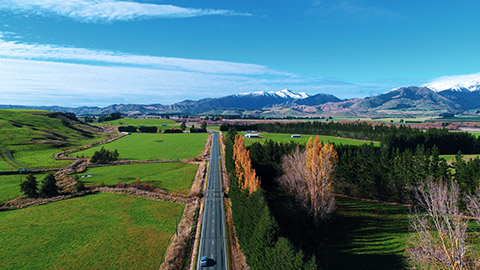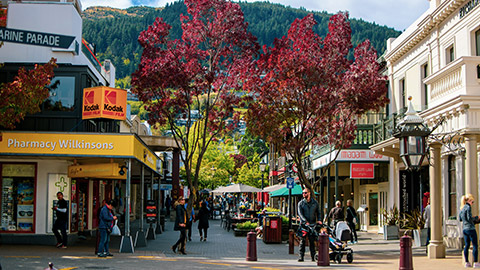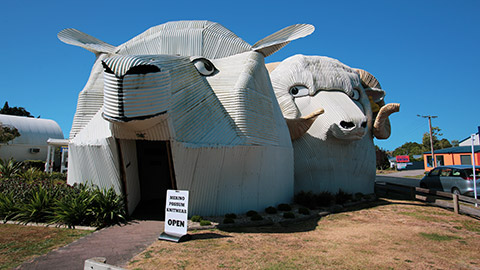The definition of domestic tourism is:
The activity of people visiting destinations within their own country’s borders, and staying at least one night.

Domestic tourism is extremely important to New Zealand’s tourism industry. Our country is so unique and diverse, we are very lucky to have such a beautiful place to live and travel in. Most of us are within a few hours of the coastline, whereas some residents of other larger countries have never seen the ocean before.
Domestic tourism is extremely important for the New Zealand tourism industry because:
- It is the mainstay of tourism
- It provides employment for New Zealanders
- It provides many tourist facilities which would otherwise not be available
- It aids regional development, especially in areas outside the main tourist routes
- It sustains tourism businesses in the low season.
- Currently, it generates more revenue that international tourism!
The following excerpt is sourced from www.tourism2025.org.nz Published 2014. Whilst the figures are now out of date, the basic overall message that domestic tourism is key remains unchanged.
Domestic tourism is a multi-billion dollar industry
Domestic tourism has been increasing steady in New Zealand over a considerable period of time. Today it is worth almost $14 billion dollars annually to the tourism industry and makes up 50% of total tourism earnings. Domestic visitors spend $39 million per day, benefiting cities, towns and communities throughout New Zealand.
Domestic tourism makes a substantial contribution to the industry's overall financial resilience, sustainability and functionality - in fact, many tourism businesses would not survive if it were not for the year-round percentage of domestic visitors. Kiwis contribution more visitor nights and higher expenditure than international visitors and help address seasonality and regional dispersal challenges.

Domestic tourism expenditure has outpaced international spending
Domestic tourism delivers many benefits to the New Zealand economy and communities across our country. The expenditure New Zealanders make on domestic travel is retained within the New Zealand economy and buffers businesses and communities from the vagaries of the global economy.
An appreciating New Zealand Dollar over the last decade is reflected in the growth of the New Zealanders holidaying overseas. Domestic tourism has also grown during this period, but not at the same rate.
Since 2003, domestic tourism expenditure has increased by 37% compared with 66% increase in New Zealanders overseas travel expenditure. Not only does a choice to travel overseas (rather than travel at home) impact on New Zealand's 'balance of travel' (see table below). This reinforces the importance of domestic tourism to our economy and the need for the industry to create a compelling reason to holiday in New Zealand.
Tourism's Money Go Round
How we account for tourism depends on who is spending the money and where they are spending it:
New Zealanders spending their money in New Zealand
When New Zealanders travel at home, the money they spend boosts our domestic economy (contributes to GDP) but has no effect on New Zealand's trade balance with the rest of the World.
Overseas visitors spending their money in New Zealand
When overseas visitors come to New Zealand the money they spend boosts the GDP and also counts as an export (people from another country, buying something from New Zealand). Exports increase New Zealand's trading income from the rest of the world.
New Zealanders spending their money overseas
When New Zealanders travel overseas, they use New Zealand money to buy something from overseas. That means they are importing tourism. Imports reduce New Zealand's trading income from the rest of the world.
When overseas visitors buy New Zealand tourism, we are exporting tourism. When New Zealanders buy tourism from another country, we are importing tourism. The more New Zealanders travel overseas) the more overseas visitors we need before New Zealand is better off.
Tourism helps drive regional economic growth and supports the revitalisation of towns and communities. This helps build regional pride and creates employment opportunities.

Tirau, (in South Waikato) for example!
Tirau is very well known for its corrugated creations as an icon for a lot of its shop owners. It has been a remarkable transformation for this small rural town which has now evolved from being a place where traffic passed through, to a vibrant, popular destination in its own right!
Matamata: Hobbiton has had a huge impact on Matamata – a few pages ahead is an article which discusses the effect Hobbiton has had on Matamata township.
Tourism provides Maori with important opportunities to nurture, celebrate, and present their culture to the world. Maori culture, in turn, adds a unique dimension to tourism in New Zealand.
Tamaki Tours started in 1989. Over 100,000 people a year experience this cultural attraction. The highly successful business turns over more than 8.5 million a year and has won numerous awards!
Tourism improves the value of national parks and other protected natural areas. It also benefits from them. The $8.8 million the Government spends each year on Fiordland National Park has helped generate 1600 jobs, $196 million in spending in the regional economy, value-added income of $78 million, and household income of $55 million. Concessionaires benefit from and add value to conservation lands.
14.5% of the nation’s workforce are employed in NZ work in the tourism industry!
Tourism has helped drive local government investment in infrastructure and leisure facilities, such as museums, art galleries, and convention centres. It has also encouraged urban renewal. This investment helps meet the needs of residents and visitors alike.

Te Papa – The government invested $317 million into this project! Since opening in February 1998, almost 30 million people have visited Te Papa (2018), far exceeding all predictions!
Within the below table there is information which shows a selection of the domestic expenditure in terms of the host regions, and by type of product. That is, what is spent by domestic tourists visiting these regions (figures are in rounded $millions and therefore grand totals may be affected).
| Accommodation | Cultural recreation & gambling | Food & Beverage served | Other Passenger transport | Other tourism products | Retail sales-alcohol, F&B | Retail sales - other (incl. fuel/car products) | Grand Total | |
|---|---|---|---|---|---|---|---|---|
| DOMESTIC | 1361 | 684 | 2151 | 3018 | 1907 | 2056 | 6398 | 17,575 |
| Auckland | 211 | 87 | 419 | 957 | 680 | 300 | 1409 | 4064 |
| Bay of Plenty | 116 | 91 | 180 | 139 | 111 | 185 | 534 | 1356 |
| Canterbury | 171 | 81 | 274 | 398 | 306 | 264 | 904 | 2399 |
| Gisborne | 13 | 3 | 17 | 8 | 8 | 32 | 50 | 131 |
| Hawke's Bay | 53 | 14 | 68 | 47 | 38 | 79 | 193 | 492 |
| Manawatu-Whanganui | 63 | 59 | 108 | 57 | 71 | 113 | 391 | 861 |
| Marlborough | 30 | 7 | 29 | 74 | 13 | 37 | 75 | 265 |
| Nelson | 27 | 3 | 30 | 67 | 15 | 22 | 91 | 254 |
| Northland | 62 | 27 | 96 | 125 | 72 | 164 | 304 | 850 |
| Otago | 182 | 124 | 239 | 374 | 127 | 220 | 571 | 1836 |
| Southland | 35 | 11 | 45 | 79 | 24 | 62 | 153 | 410 |
| Taranaki | 38 | 10 | 40 | 37 | 31 | 43 | 129 | 327 |
| Tasman | 18 | 8 | 25 | 20 | 18 | 40 | 59 | 188 |
| Waikato | 144 | 109 | 291 | 143 | 176 | 290 | 893 | 2046 |
| Wellington | 161 | 39 | 268 | 435 | 210 | 169 | 581 | 1861 |
| West Coast | 38 | 11 | 23 | 58 | 9 | 36 | 60 | 235 |
Sourced from MBIE, Monthly regional tourism estimates- Y/E July 2019. Sum of spend in millions
It might be worth pointing out the surprise statistics coming out of the Waikato region. This covers a large area which includes several major attractions: (Lake Taupo, Waitomo, Hobbiton, Fieldays, Rugby 7s etc.) – all big draw cards and revenue earners.
We’ve now learnt that domestic tourism is a multi-billion dollar industry which has been growing steadily over the last decade.
As at July 2019, from the previous table, you can see that it is worth just over $17.5 billion dollars annually to the tourism industry and makes up just over 60% of total tourism earnings. Domestic visitors spend over $45 million per day, benefiting cities, towns and communities throughout New Zealand.
Kiwis contribute more visitor nights and higher expenditure than international visitors and help address seasonality and regional dispersal challenges.
